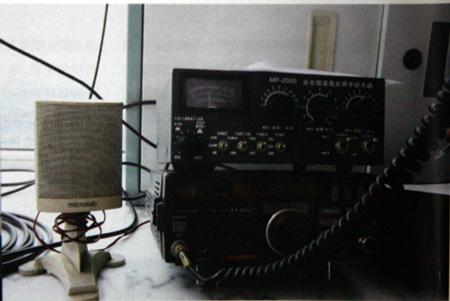
A temporary short-wave radio station providing effective communication over more than 300 kilometers. It can pick up radio signals from the United States.
All the windows of Liu Hu's office in Chengdu broke when the earthquake struck in Sichuan Province. Liu immediately hid in the washing room and the quake stopped two or three minutes later. Liu declared an emergency communication situation on the Ham radio network through a portable radio station. Sub-stations of the network around Sichuan Province quickly began to send quake information to the Master Control Station.
At 2:45 PM May 12, Liu Hu learned that the quake epicenter was Wenchuan County, 90 kilometers north of Chengdu, the capital city of Sichuan Province. Communications there were knocked out. Liu called his Ham friends to do their best to keep radio stations operational and prepare for emergency communication and rescue activities. More than 200 radio Hams answered his call and more than 100 reports on quake information were collected.
A radio Ham named Xiang Yong drove from Chengdu to Wenchuan. Things got worse as Xiang drove towards the western areas of the province. He reported the latest information through his radio station until the relay station of the emergency communications network no longer functioned.
Liu Hu had to write down all the information collected from his fellow Hams on his hands, since he had forgotten to get hold of batteries and paper. He passed on his information to the Master Control Station within an hour, confirming no major casualties in Chengdu. The Master Control Station began to transmit information on the disaster to other radio stations around the country and learned that the earthquake had also been felt in Beijing, Shanghai and Guangzhou.